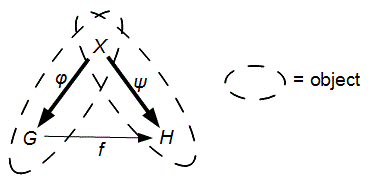Given ideals I and J of ring R, we can perform the following operations to obtain new ideals:
is an ideal of R;
is an ideal of R;
is an ideal of R. Thus, IJ is the set of all finite sums of xy where x, y belong to I, J respectively.
Verifying that these sets are ideals is a rather routine process so we’ll leave it to the reader. Instead, we’ll spend some time explaining what these operations mean. The intersection I ∩ J needs no explanation: that’s the biggest ideal of R contained in both I and J. The sum I+J is the “dual” : it’s the smallest ideal of R which contains both I and J. Finally, IJ is the smallest ideal which contains xy for all x in I and y in J.
Note :
. Indeed, if
, then
since I is an ideal; likewise,
since J is an ideal. Hence
.
The case of R = Z illustrates this quite nicely. Note that all ideals of Z can be written as nZ for some non-negative integer n. Also, if and only if b | a. Thus:
- mZ + nZ is the smallest ideal containing mZ and nZ, i.e. dZ where d is the largest value dividing m and n; thus mZ + nZ = gcd(m, n)Z;
- mZ ∩ nZ = lcm(m, n)Z;
- mZ · nZ = mnZ.
Generalisation. One can generalise the intersection and sum to arbitrary collections of ideals. Thus if {Iλ} is a collection of ideals, we can define ∩λ Iλ as the set of x which occurs in all Iλ and ∑λ Iλ as the set of all finite sums of elements from Iλ (we can only take finite sums since we can’t sum an infinite number of elements here without the concept of convergence).
Although we can’t take an infinite product of Iλ, we can take any finite product of I1, I2, …, In inductively: first take I1I2, then (I1I2)I3, then ((I1I2)I3)I4 … It turns out taking product of ideals is associative (proof: exercise), so we can drop the brackets and write I1I2…In.
Another way of looking at the n-term product I = I1I2…In is that I is the smallest ideal which contains all products of the form
, for
.
Another example. Consider the ring R[x, y] of polynomials in x, y with real coefficients. Define the ideals and
, i.e. I (resp. J) is the set of polynomials divisible by x (resp. y). Then:
- I + J = set of all polynomials in x, y without constant term;
= set of multiples of xy;
= set of multiples of xy.
Exercise. Let R and S be rings and take the ring product R × S. Prove that if I and J are ideals of R and S respectively, then I × J is an ideal of R × S. Note that the quotient is:
Prove also that conversely, any ideal of R × S must be of the form I × J for some ideals I and J of R and S respectively.
The ideals {0} × S and R × {0} give quotients which are isomorphic to R and S respectively. Hence, even though R and S are not subrings of R × S, they’re its quotient rings.






